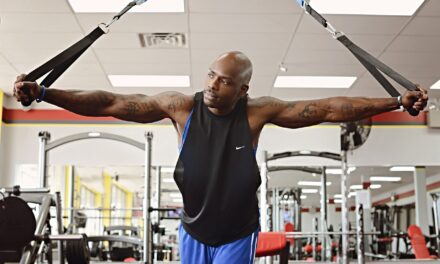For adults over 50, maintaining muscle mass is not just about retaining physical strength and appearance—it’s crucial for sustaining mobility, independence, and overall health. Muscle loss, or sarcopenia, naturally begins as part of the aging process, but it doesn’t have to be an inevitable decline. Understanding and implementing specific strategies can significantly reduce the rate of muscle loss, enhancing life quality as one ages.
This article delves deep into the causes of muscle loss after 50 and outlines practical, scientifically backed strategies to prevent it. From nutritional adjustments to tailored exercise routines, the focus is on empowering individuals over 50 with the knowledge and tools needed to maintain muscle strength and function. This proactive approach not only supports daily activities but also plays a critical role in managing chronic diseases, reducing the risk of falls and injuries, and boosting metabolic health.
As we explore the effective measures to combat sarcopenia, we’ll highlight the importance of dietary protein, resistance training, and hormone balance, among other factors. The goal is to provide a comprehensive guide that not only educates but also motivates individuals to make lifestyle changes that have a profound impact on their aging process.
Join us as we uncover actionable insights and expert advice on preserving muscle mass after 50, ensuring a stronger, more vigorous, and healthier future.
Combating Muscle Loss After 50: Effective Strategies
Understanding and addressing muscle loss after 50 involves a comprehensive approach that incorporates dietary, exercise, and lifestyle modifications. Here are the key areas to focus on to maintain and even build muscle mass as you age.
1. Prioritizing Protein Intake
Protein is fundamental in building and repairing muscle tissue. As metabolism slows with age, the body’s ability to synthesize protein decreases, making it essential to consume adequate protein to prevent muscle deterioration.
Optimal Protein Sources: Include a variety of protein sources in your diet, such as lean meats, fish, eggs, dairy, legumes, and plant-based proteins like tofu and tempeh.
Protein Distribution: Spread protein intake evenly throughout the day to maximize muscle protein synthesis. Aim for at least 20-30 grams of high-quality protein per meal.
2. Engaging in Resistance Training
Resistance training is the most effective form of exercise to combat muscle loss. Lifting weights or using resistance bands helps stimulate muscle growth and increase strength.
Tailored Exercise Routines: Incorporate exercises that target all major muscle groups. Work with a fitness professional to create a safe and effective routine, especially if you are new to resistance training.
Consistency is Key: Aim for at least two to three resistance training sessions per week, ensuring adequate rest days between sessions for muscle recovery.
3. Emphasizing Hormonal Balance
Hormonal changes significantly affect muscle mass. Testosterone and growth hormone, in particular, play vital roles in muscle growth and maintenance.
Consult Healthcare Providers: Discuss with your doctor about hormonal screenings and consider ways to naturally boost hormone levels through diet, supplements, or other medical treatments if necessary.
4. Ensuring Sufficient Vitamin D and Calcium Intake
Both vitamin D and calcium are crucial for bone health, which supports muscle function and overall mobility.
Supplement Wisely: Especially in regions with limited sunlight, supplementing with vitamin D can be crucial. Calcium is vital for those over 50, ensuring the preservation of bone mass which supports muscular function.
Food Sources: Incorporate foods rich in vitamin D and calcium, such as dairy products, fortified foods, leafy greens, and fatty fish.
5. Staying Hydrated and Managing Overall Health
Hydration and overall health management play significant roles in maintaining muscle mass. Chronic dehydration can lead to decreased strength and endurance.
Hydration: Drink adequate fluids throughout the day. Water is best, but other fluids like herbal tea count toward your daily intake.
Chronic Disease Management: Control other health conditions such as diabetes or cardiovascular disease, as they can indirectly impact muscle health.
Summary and Takeaways: Empowering the 50+ with Muscle Maintenance
Maintaining muscle mass after 50 is crucial for a vibrant and active lifestyle. By prioritizing protein, engaging in regular resistance training, managing hormonal levels, ensuring adequate intake of essential nutrients, and maintaining overall health, individuals can effectively combat muscle loss associated with aging.
Proactive Approach: Start early with preventive measures to minimize muscle loss and enhance quality of life.
Lifelong Commitment: View muscle maintenance as a long-term commitment rather than a quick fix.
Seek Professional Guidance: Utilize the expertise of nutritionists, trainers, and healthcare providers to optimize your muscle preservation strategy.
By embracing these strategies, individuals over 50 can look forward to stronger, healthier senior years with improved mobility, reduced injury risk, and enhanced metabolic health.






